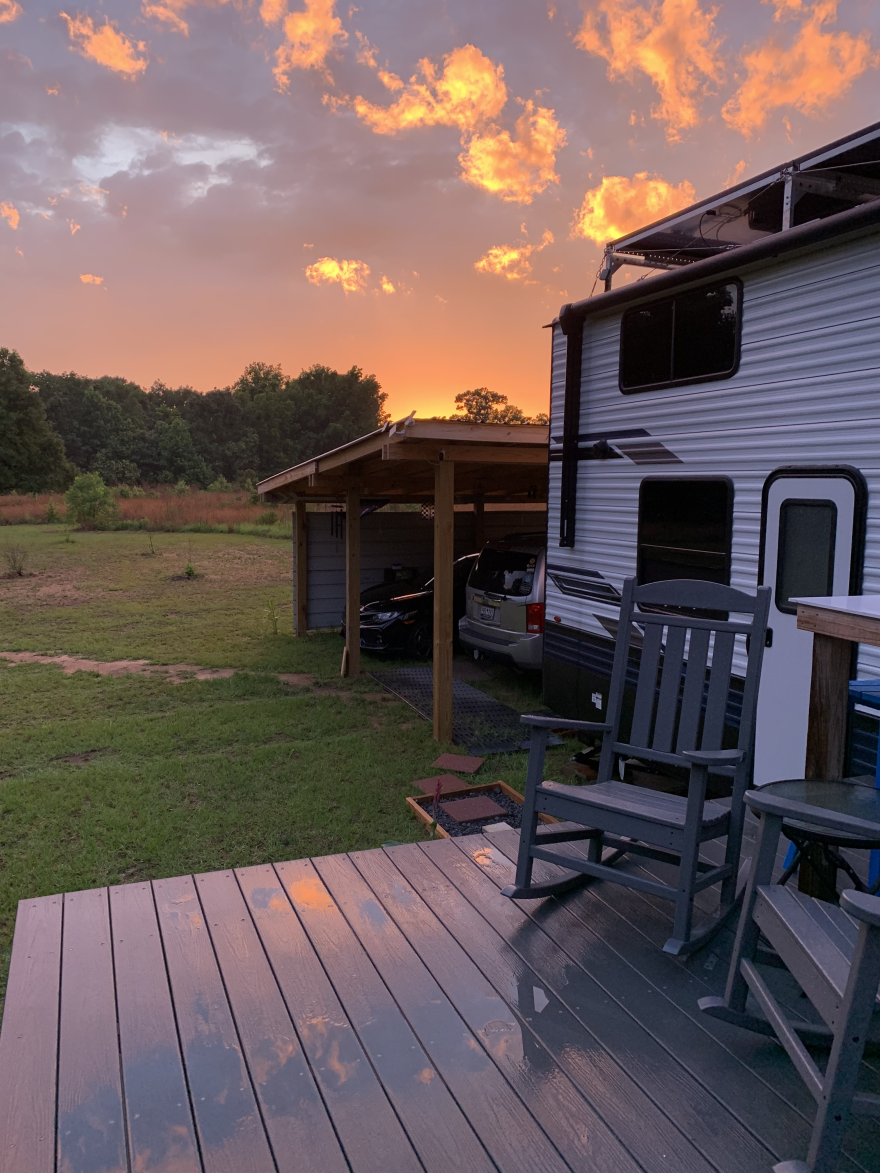|
Top of morning to you Kimberly,
A gentle shift from busy day to restful night can transform your energy tomorrow.
Our Wind-Down Routine
In the last few years, I’ve really come to understand the power of a nightly wind-down routine. It’s like prepping for a meal or studying for a test—you’re preparing your body and mind for rest.
For Glen and I, that means being off our phones and devices at least an hour before bed. On cooler nights, we’ll sometimes sip chamomile tea. Most evenings, we spend 30 minutes simply sitting, reading, doing a devotional, or chatting quietly. Our favorite routine is when the weather lets us rock in our rocking chairs on the deck, in the evening darkness, surrounded by nature’s sounds and fresh air. The “furry kids” love it too—though they’re usually on the hunt for little frogs that hop too close!
I’ve noticed that when our routine is cut short or is nonexistant, I have a harder time falling asleep. I also try to limit what I see, hear, or think about before bed—avoiding anything that could stir up stress or excitement. For me, it’s all about relaxation and preparing my mind and body for quality sleep.
Barriers to Sleep Quality
Often we hear “quality over quantity,” but when it comes to sleep—you need both.
-
Week 1: We looked at light exposure and how it shapes your circadian rhythm.
-
Week 2: We explored how much sleep is needed at every age.
-
Week 3: Let’s turn to the barriers that keep us from falling—and staying—asleep, plus how to create an environment for quality rest.
Barriers to Falling Asleep
- Bright lights, screen time, or noise before bed
- Too little physical activity or sunlight during the day
- Evening intake of caffeine, alcohol, or high-salt foods
- Exercising too late at night or no physical activity during the day
- Skipping quality carbohydrates at breakfast
Barriers to Staying Asleep
- Noise, light, or temperature fluctuations during the night
- Dehydration or drinking diuretics (soda, caffeine, alcohol) too late
- Worrying, planning, or racing thoughts at night
A Lifestyle of Sleep Quality
MIND → Keep your bedroom a sacred space for sleep (and intimacy). If your body associates it with work or other stimulating activities, it’s harder to relax.
BODY → A warm bath, shower, or even warming your feet before bed can signal your core temperature to drop—helping your body know it’s time to sleep. A non-caffeinated beverage can also help.
RHYTHM → Allow at least 60 minutes to slow down and shift from the activity of the day into your wind-down routine. This consistency trains your body to expect rest.
Tips for Relaxation at the Stoltzfus Back 40

- Off phones/devices/TV at least 1 hour before bed (around 8 p.m. for us since we rise at 5 a.m.)
- Dimming lights—our solar lights give just enough glow for ambiance and safety
- Sitting peacefully for at least 30 minutes
- Devotional time – good head space = good sleep space
- Sometimes a cup of chamomile or mint tea (mint is still my favorite)
- Best of all: rocking on the deck with nature’s sounds, fresh air, and a cozy blanket
Your Turn
What does your routine look like? If you implement just one or two of these tips, how might you feel in the morning? Imagine waking up with greater clarity, reduced pain, and more energy to live your day with purpose.
Connect With Me
Virtual Coffee Chat & Local Coffee Chat options pending your location and time — Let’s talk about how lifestyle coaching could help you or someone you know.
Find Your Energy Discovery Session — For those ready to reduce inflammation and pain with sleep excellence and wake energized.
Sleep solid for energy tomorrow,
Kim
Hope and Healing Lifestyle Coach
hopeandhealinglifestyle.com
“When you lie down, you will not be afraid; when you lie down, your sleep will be sweet.”
— Proverbs 3:24 (NIV)
|